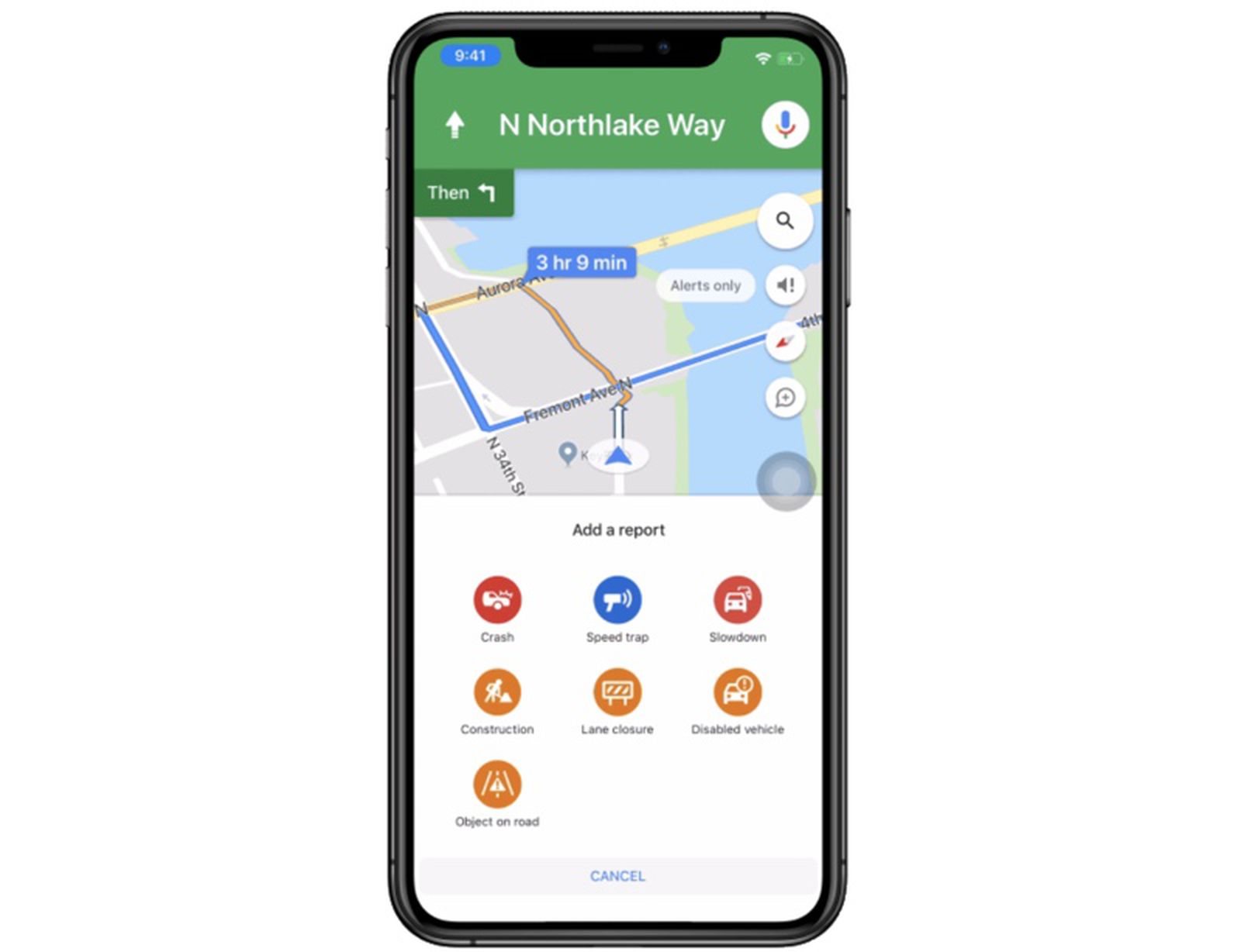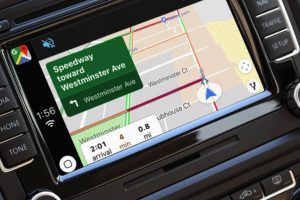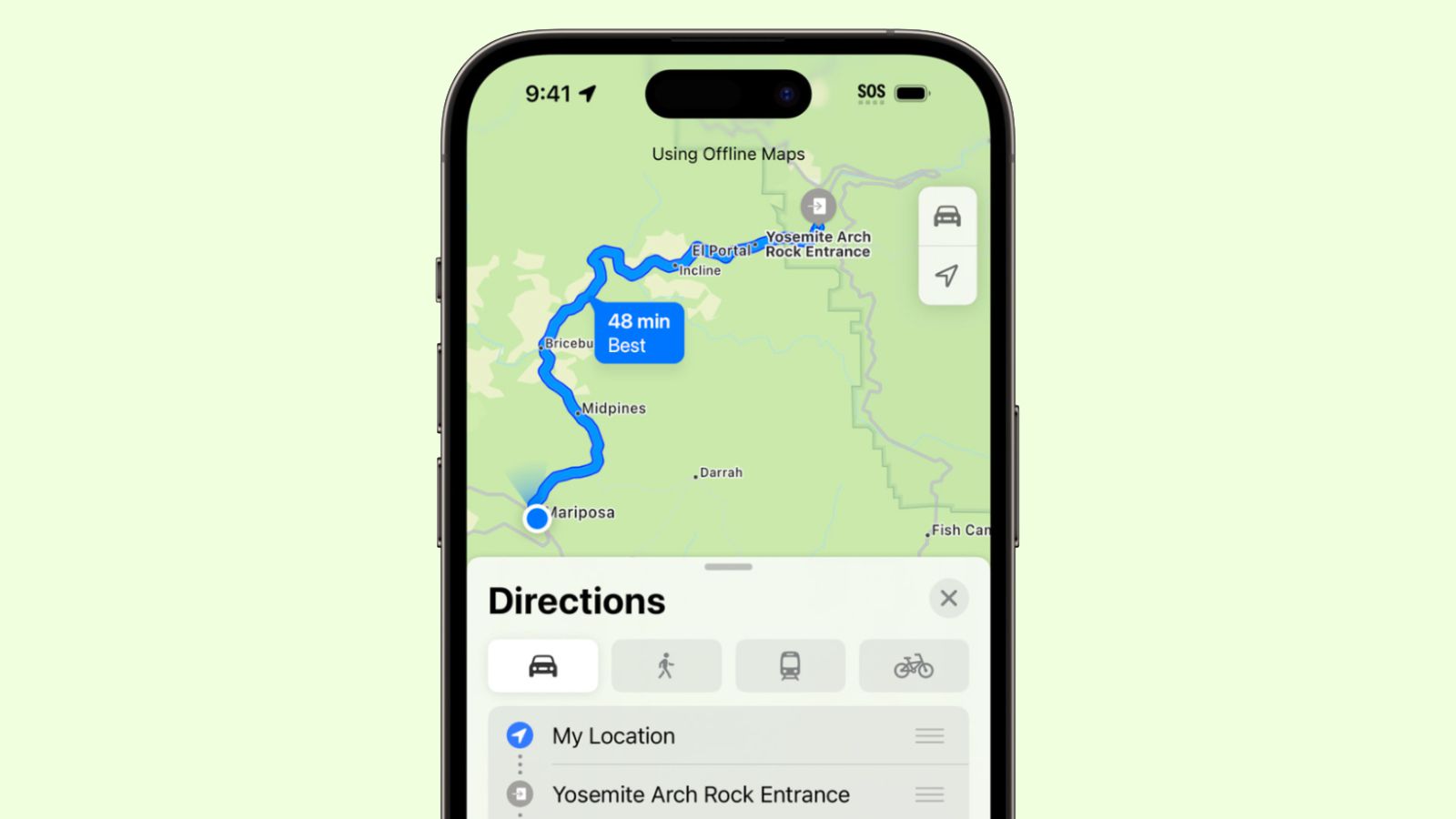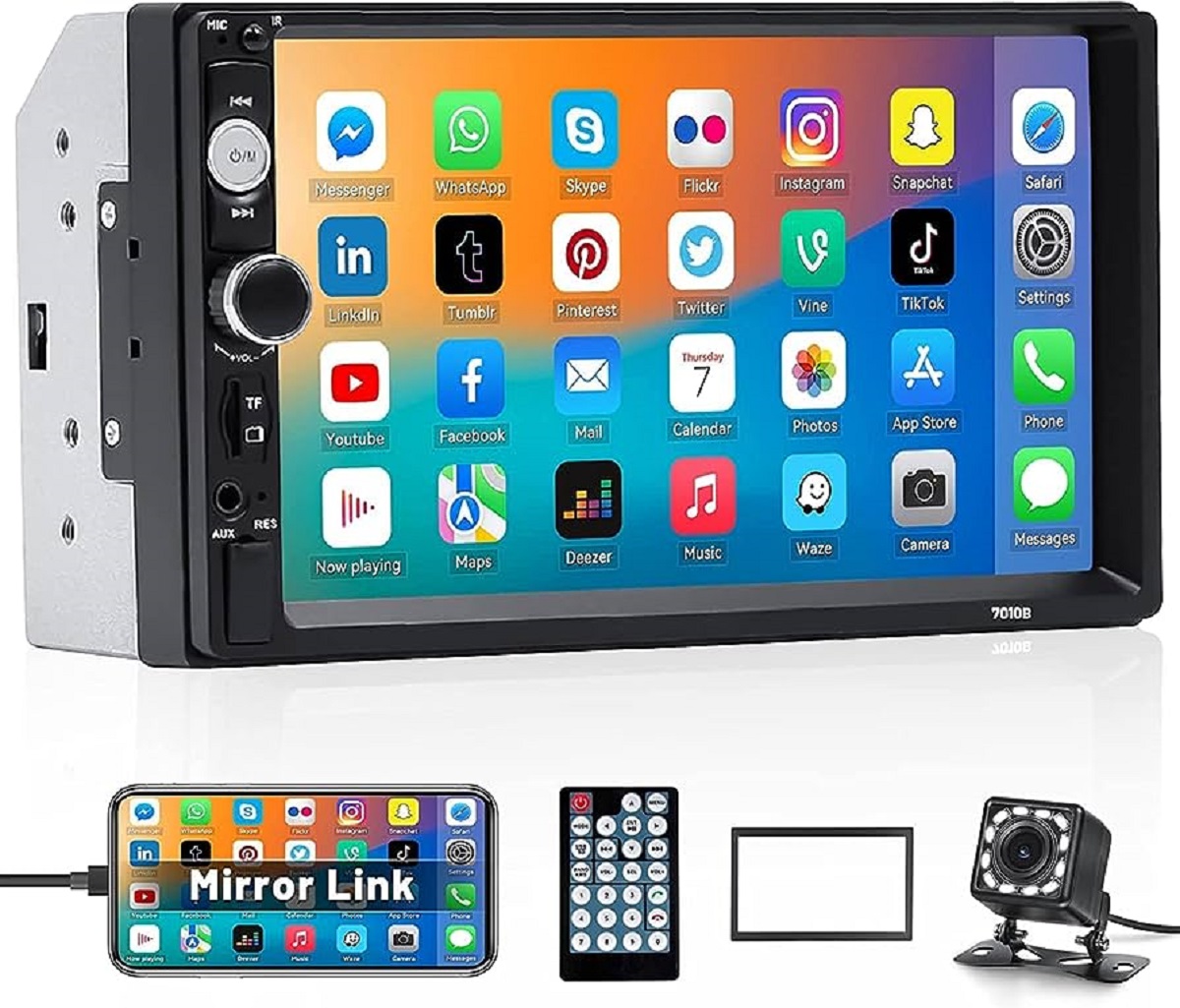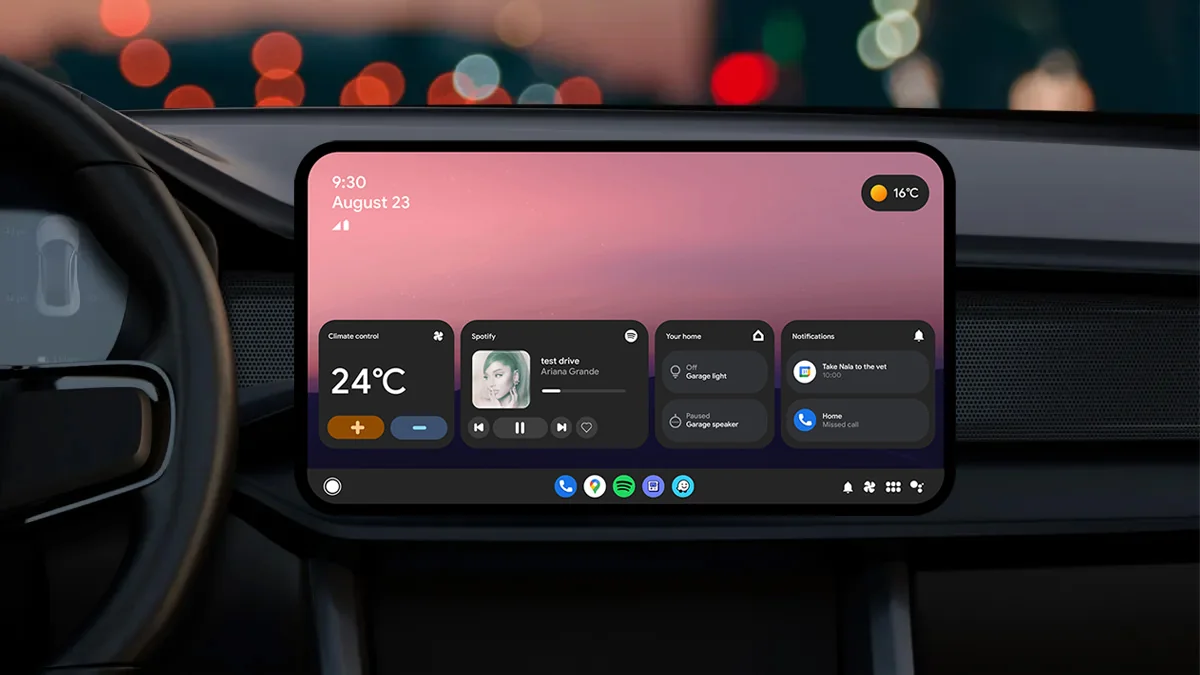Introduction
Have you ever found yourself in a situation where you needed access to navigation but couldn’t rely on a stable internet connection? Whether you’re traveling to a remote area or trying to save data while abroad, having offline maps can be a lifesaver. In this article, we’ll explore how to download offline Google Maps on your iPhone, allowing you to navigate without relying on an internet connection.
In today’s fast-paced world, we heavily rely on our smartphones to navigate us through unfamiliar territories. However, when we encounter areas with poor cell reception or exorbitant roaming charges, relying solely on online maps can become a major inconvenience. This is where offline maps come to the rescue.
Offline maps are pre-downloaded maps that allow you to access navigation information without using mobile data or requiring an internet connection. Google Maps, one of the most popular navigation apps, provides users with the ability to download maps to use offline, ensuring that you never get lost even in the most remote locations.
Downloading offline maps can offer various benefits. Firstly, it provides you with the flexibility to explore unfamiliar places without worrying about connectivity issues. Whether you’re hiking in a national park or exploring a foreign city, offline maps allow you to navigate confidently, knowing that you have access to the necessary directions even when you’re offline. Additionally, downloading offline maps can help you save on data usage, especially when you’re on a limited or expensive data plan.
Now that we understand the importance of having offline maps, let’s delve into the step-by-step process of downloading offline Google Maps on your iPhone. With a few simple steps, you’ll be able to access navigation information without relying on an internet connection, ensuring a seamless and stress-free travel experience.
Why would you want to download offline maps?
There are several compelling reasons why downloading offline maps can be beneficial for you. Let’s explore some of the main reasons:
- Unreliable or unavailable internet connection: In certain areas, you may encounter weak or no internet connectivity, making it difficult to access online maps. By downloading offline maps, you can navigate these areas without relying on an active internet connection.
- International travel: When traveling to a foreign country, using mobile data can be expensive due to roaming charges. By downloading offline maps before your trip, you can save on data usage and avoid exorbitant fees while still having access to reliable navigation.
- Data saving: If you have a limited data plan, constantly using online maps can quickly consume your allocated data. Downloading offline maps allows you to access navigation information without using mobile data, making it an ideal solution to conserve your data usage.
- Exploring remote areas: If you’re planning to venture into remote locations, such as national parks or mountainous regions, online maps may not provide accurate or detailed information. Offline maps ensure that you have access to reliable navigation data, no matter how off the beaten path your adventure takes you.
- Emergency situations: In emergency situations where you need immediate access to navigation, relying on an internet connection may not always be feasible. Having offline maps readily available on your phone can provide crucial assistance, getting you to safety quickly and efficiently.
By downloading offline maps, you gain the independence and peace of mind to navigate confidently, regardless of the availability or quality of your internet connection. Whether you’re a frequent traveler, an outdoor enthusiast, or simply looking to save on data usage, offline maps offer a practical and convenient solution to ensure you never get lost or stranded.
How to Download Offline Google Maps on iPhone
Downloading offline Google Maps on your iPhone is a straightforward process. Follow these step-by-step instructions to have access to navigation information even when you’re offline:
- Step 1: Open the Google Maps app
- Step 2: Search for your desired location
- Step 3: Download the offline map
- Step 4: Access the offline map
Before you can download offline maps, make sure you have the latest version of the Google Maps app installed on your iPhone. Open the app from your home screen by tapping on the colorful map icon.
Once you have opened the Google Maps app, use the search bar at the top of the screen to enter the location you want to download the offline map for. You can search for a specific address, city, or even a landmark.
After you have searched for the desired location, a card with information about the location will appear at the bottom of the screen. Tap on the card to expand it. Among the options that appear, select “Download” to start downloading the offline map for that location.
Once you have downloaded the offline map, it will be accessible on your iPhone even when you are offline. To view the downloaded map, simply open the Google Maps app and navigate to the desired location. The map will be available for viewing and navigation without an internet connection.
It’s important to note that the size of the offline map may vary depending on the area you are downloading. Therefore, make sure you have enough storage space available on your iPhone before downloading the offline map.
By following these simple steps, you can ensure that you have access to navigation information even when you don’t have an internet connection. This can be extremely useful when traveling to remote areas, exploring unfamiliar territories, or simply to save on data usage.
Step 1: Open the Google Maps app
The first step in downloading offline Google Maps on your iPhone is to open the Google Maps app. Follow these instructions to locate and open the app:
- Locate the Google Maps app on your iPhone: Look for the colorful map icon on your home screen. It’s usually a square icon with a red, blue, yellow, and green pin located in the bottom-right corner of the icon.
- Tap on the Google Maps app icon: Once you have located the app on your home screen, simply tap on the icon to open the Google Maps app. The app will load and launch, taking you to the main interface where you can start using it.
- Wait for the app to open: Depending on your device’s speed and internet connection, it may take a few moments for the Google Maps app to open and load its interface. Be patient and wait for the app to fully open before proceeding to the next steps.
- Sign in (if necessary): If you haven’t signed into your Google account on the app, you may be prompted to sign in. Enter your Google account details (email and password) to log in. If you don’t have a Google account, you can create one by tapping on the “Create account” option.
Once you have successfully opened the Google Maps app on your iPhone, you’re ready to proceed to the next step: searching for your desired location to download the offline map.
By following these simple steps, you can easily open the Google Maps app on your iPhone, which is the first step in downloading offline maps. It’s important to have the latest version of the app installed and a stable internet connection to ensure a seamless and efficient user experience.
Step 2: Search for your desired location
Once you have opened the Google Maps app on your iPhone, the next step in downloading offline Google Maps is to search for the location you want to download the offline map for. Follow these instructions to search for your desired location:
- Locate the search bar: At the top of the Google Maps app interface, you will see a search bar. It is usually represented by a magnifying glass icon. Tap on the search bar to activate it and start typing the name or address of the location you want to download the offline map for.
- Enter the name or address of the location: Once you have tapped on the search bar, the keyboard will appear on your screen. Start typing the name or address of the location you want to download the offline map for. As you type, Google Maps will suggest relevant locations based on your input.
- Tap on the desired location: As you type, a list of suggested locations will appear below the search bar. Scroll through the list or continue typing until you see the desired location. Tap on the location to select it.
Once you have selected the desired location, Google Maps will automatically navigate to that location on the map. You will see a marker indicating the location, along with additional information such as the address and contact details if available. At this point, you’re ready to proceed to the next step: downloading the offline map.
It’s worth noting that if you want to download the offline map for a specific area, you can also zoom in and out on the map by pinching or spreading your fingers on the screen. This allows you to select a smaller or larger area for offline download, depending on your needs.
By following these simple steps, you can easily search for your desired location on the Google Maps app, which is the second step in downloading offline maps. Whether you’re looking for a specific address, city, or even a landmark, the search function in Google Maps makes it easy to locate your destination.
Step 3: Download the offline map
After you have searched for the desired location on the Google Maps app, the next step in downloading offline Google Maps on your iPhone is to actually download the offline map for that location. Follow these instructions to download the offline map:
- Expand the location card: Once you have selected the desired location, a card with information about that location will appear at the bottom of the screen. This card provides details such as the address, contact information, and other related options. Tap on this card to expand it and reveal additional options.
- Select “Download”: Among the options that appear when you expand the location card, look for the “Download” option. It is usually represented by a down arrow icon. Tap on “Download” to initiate the download of the offline map for that location.
- Choose the size of the offline map (if applicable): In some cases, when you select “Download,” you may be prompted to choose the size of the offline map. This allows you to select a smaller or larger area for download, depending on your needs and the amount of storage space available on your iPhone.
- Wait for the download to complete: Once you have confirmed the download, Google Maps will start downloading the offline map for the selected location. The download time will depend on the size of the map and the speed of your internet connection. Make sure you have a stable internet connection and be patient while the download completes.
Once the download is complete, the offline map will be available for access on your iPhone even without an internet connection. You can view and navigate through the downloaded map just like you would with an online map, but without the need for an active internet connection.
It’s important to note that the size of the offline map may vary depending on the area you are downloading. Therefore, make sure you have sufficient storage space available on your iPhone before initiating the download.
By following these simple steps, you can easily download the offline map for your desired location on the Google Maps app. This ensures that you have access to reliable navigation information, even when you are offline or have limited internet connectivity.
Step 4: Access the offline map
After successfully downloading the offline map for your desired location on the Google Maps app, the next step is to access and utilize the offline map. Follow these instructions to access the offline map:
- Open the Google Maps app: Locate the Google Maps app icon on your iPhone’s home screen and tap on it to open the app.
- Navigate to the downloaded location: Once the app is open, use the search bar at the top to enter the name or address of the location you downloaded the offline map for.
- Select the downloaded location: As you type, the app will suggest locations. Tap on the desired location from the suggestions or the search results to navigate to the downloaded area on the map.
- Explore the offline map: Once the app has navigated to the downloaded location, you will be able to view and interact with the offline map. You can swipe, pinch, and zoom to explore different areas of the downloaded map, just like you would with an online map.
- Utilize navigation features (if available): Depending on the options and features of the Google Maps app, you may still have access to navigation features even when you are offline. You might be able to get directions, search for nearby places, and even receive turn-by-turn navigation instructions to your destination.
It’s important to note that while accessing the offline map, some features may be unavailable or limited compared to using the app with an internet connection. For example, real-time traffic updates, public transportation information, and live location sharing may not be available in offline mode.
By following these simple steps, you can easily access and utilize the offline map you downloaded on the Google Maps app. Whether you’re exploring a remote area, traveling internationally, or conserving data usage, having access to offline maps ensures that you can navigate confidently and efficiently, even without an active internet connection.
Tips for Using Offline Maps Effectively
While offline maps can significantly enhance your navigation experience, there are a few tips and tricks you can follow to make the most out of using them. Here are some valuable tips for using offline maps effectively:
- Download maps in advance: Before embarking on your journey, it’s advisable to download the offline maps for the areas you’ll be visiting. This ensures that you have access to the maps even if you encounter limited or no internet connectivity during your trip.
- Keep your offline maps up to date: Since maps and navigation information frequently change, it’s essential to periodically update your offline maps. By doing so, you ensure that you have the most accurate and reliable navigation data available.
- Plan your routes in advance: While using offline maps, it’s beneficial to plan your routes and mark key points of interest ahead of time. This allows for smoother navigation, especially when you may not have access to real-time traffic information.
- Save important addresses and locations: To easily access frequently visited places, save important addresses and locations within the Google Maps app. This ensures quick navigation to those places even without an internet connection.
- Make use of landmarks and visual cues: When navigating with offline maps, rely on landmarks and visual cues to assist you. Pay attention to distinct buildings, street signs, and natural features that can help guide you along your route.
- Consider downloading maps for neighboring areas: If you’re visiting multiple locations within close proximity to each other, download the offline maps for neighboring areas as well. This provides seamless navigation between locations without the need for an internet connection.
- Maximize battery life: Using maps can drain your phone’s battery quickly. To optimize battery life, lower the screen brightness, close unnecessary apps running in the background, and consider carrying a portable charger or battery pack.
- Keep an offline backup: In case of any unexpected technical difficulties or loss of data, it’s wise to have a backup of your offline maps. Consider saving a copy of the offline maps on a secondary storage device, such as an SD card or cloud storage, for easy retrieval.
- Stay aware of limitations: While offline maps offer great convenience, they do have limitations. Remember that you won’t have access to real-time traffic updates, live location sharing, or public transportation information when using offline maps.
By following these tips, you can make the most out of using offline maps and ensure a smooth and reliable navigation experience. Whether you’re traveling to remote locations, exploring new cities, or simply trying to conserve data usage, offline maps can be a valuable tool to help you navigate confidently and efficiently.
Conclusion
Downloading offline Google Maps on your iPhone provides a valuable solution for navigating without relying on an internet connection. Whether you’re traveling to remote areas, exploring unfamiliar territories, or looking to save on data usage, offline maps can greatly enhance your navigation experience. By following the simple steps outlined in this article, you can easily download offline maps and access them whenever you need, even in areas with limited or no internet connectivity.
Offline maps offer numerous benefits, including the ability to navigate confidently in areas with unreliable internet connections, avoiding expensive data charges while traveling internationally, and ensuring you have access to navigation information even during emergencies. With the Google Maps app, downloading offline maps is a straightforward process that empowers you to explore the world around you without worrying about connectivity or data usage.
Remember to plan ahead and download the offline maps for your desired locations in advance. Keep your offline maps up to date and take advantage of features such as saving important addresses and landmarks. While using offline maps, it’s also essential to consider the limitations, such as the lack of real-time traffic updates and public transportation information. By following these tips and making the most out of offline maps, you can navigate effectively, save time and resources, and ensure a seamless travel experience.
So, the next time you find yourself in an area with limited internet connectivity or want to explore a new destination without relying on data, be sure to download the offline maps on your iPhone. With offline maps, you’ll never have to worry about getting lost or being without navigation assistance. Happy travels!







